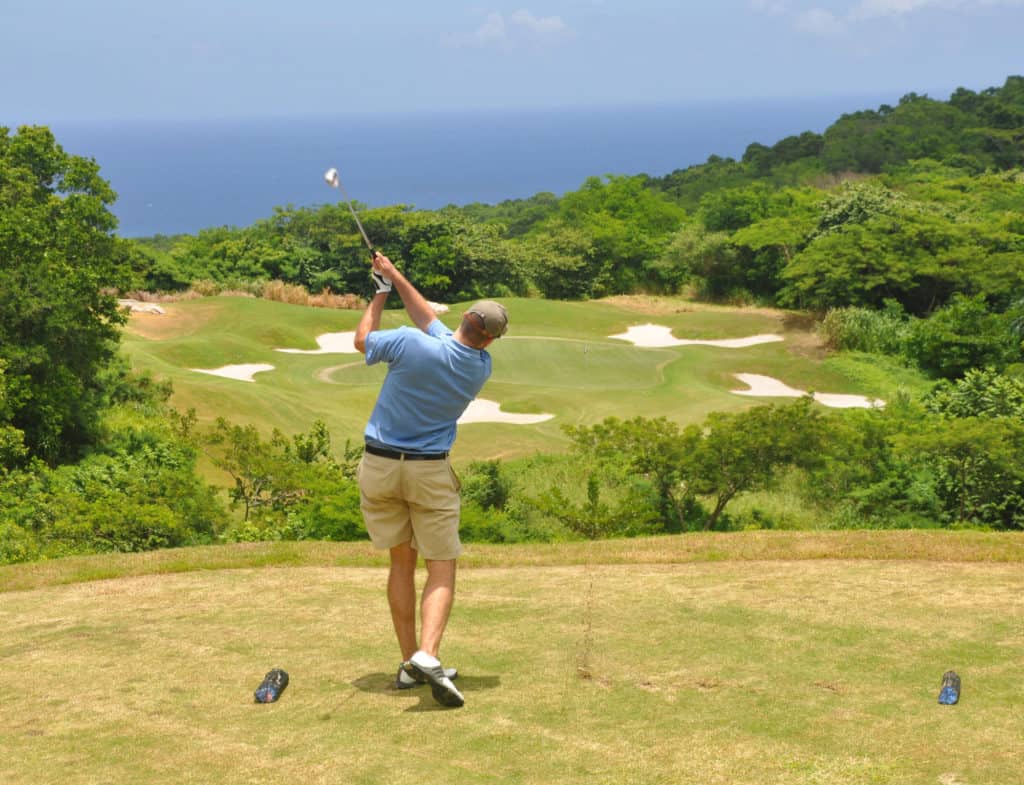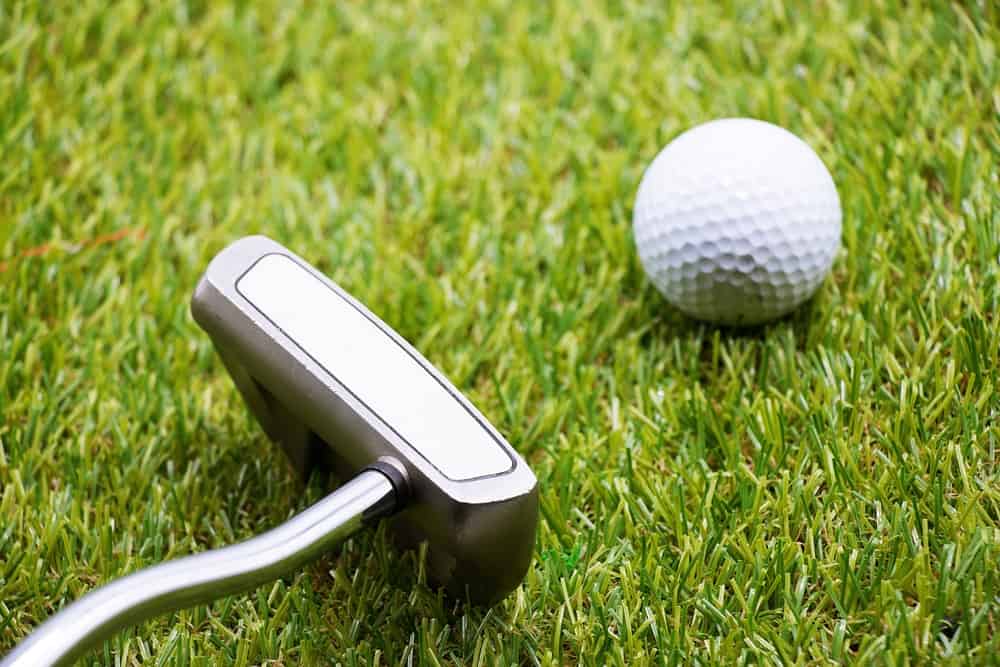
A 56- and a 60-degree wedge are the two most commonly played wedges in golf.
They each have their unique strengths and weaknesses.
If you have ever wondered which one you should keep in your bag and when you should play each one, you are in the right place.
We will help explain what a 56-degree wedge is for, what a 60-degree wedge is for, and which one should earn a full-time spot in your golf bag.
56 vs. 60 Degree Wedge

If you are wondering whether it makes sense to carry both a 56- and a 60-degree wedge, it does.
Both the 56- and 60-degree wedges serve a purpose in the golf bag and will make the game of golf a bit easier.
When it comes to determining which club to hit from one lie to the next, there are a few different things you need to consider.
We will break down when it makes sense to use the 56 and when the 60 should be used.
Golfers should carry several wedges with varying degrees of loft in their golf bag.
What Is a 56-Degree Wedge Used For?

A 56-degree wedge is most commonly referred to as a sand wedge.
This club works excellent for getting the golf ball up in the air and having it land softly.
The 56-degree wedge will usually roll a few yards when it does hit the ground.
A 56-degree wedge is excellent for shots out of a bunker, and it also works well when hitting shots around the green out of the rough.
This wedge is often used for approach shots to the green when your pitching wedge is just too much club.
Great golfers will have an excellent relationship with their 56-degree wedge.
This is considered to be a scoring hole, and it can make or break a hole or your entire round of golf.
What is a 60-Degree Wedge Used For?

A 60-degree wedge has four more degrees of loft than a 56-degree wedge.
This extra loft can make a big difference when it comes to getting the ball up in the air and then stopping it on the green.
Sixty-degree wedges work well for greenside bunker shots, and they tend to spin quite a bit.
The 60-degree wedge is the easiest club in your bag as far as the loft is concerned.
If you want to learn how to stop a ball on a green, the 60-degree is a great way to start.
For most of the shots you hit with a 60-degree wedge, you will be flying it up to the pin and having the ball stop immediately.
Sixty-degree wedges can sometimes scare people because a very common miss is a bladed type shot.
If you are playing with the proper equipment for you, this type of shot should not be a concern.
Some golfers only have a 56-degree wedge in their bag, but most golfers should carry a wedge with more loft than 56 degrees as well.
Sometimes there are situations on a golf course when you will only have a few feet of green to work with before you get to the pin.
Do Pros Use 60-degree Wedges?

Yes, pros all have a high-lofted wedge in their bag.
Some golfers will have a 62- or 64-degree wedge, but very few will have a 56-degree as their highest lofted club.
There are a few reasons for this, and some of it has to do with the distances they can hit their clubs.
Golf professionals hit the ball so far that they want golf clubs with more loft to help them hit some of the shorter distances they may need.
Another reason golfers carry a high-lofted club is they will often find themselves in very thick rough or difficult to escape bunkers.
These wedges with the extra loft are the only clubs that will give the performance the pros need around the greens.
When you see golfers like Phil Mickelson hitting high-lofted wedge shots, they are using their lob wedge.
How Far Should You Hit a 60-Degree Wedge?

How far you will hit a golf club depends solely on your swing speed and how well you make contact with the golf ball.
If you have a high level of clubhead speed, you can hit your 60-degree wedge more than 100 yards.
If you have a slower swing speed, the ball may only travel fifty yards or so.
Using a 60-degree wedge as a full swing shot is not a shot amateurs hit all that often.
There is a bit of risk involved, and sometimes it is easier to hit the golf ball a little lower along the ground to get more consistent results.
Golfers will usually opt to go with a half a pitching wedge shot as opposed to a full swing 60-degree wedge.
When thinking about your golf game and the distances you can hit your shots, don’t worry so much about your max distances on the 60 degrees.
Depending on the bounce and grind you have on your wedges, it could have an impact on the golf shot as well.
How Far Should You Hit a 56-Degree Wedge?

The same thing goes for the 56-degree wedge as for the 60-degree wedge.
If you swing the golf club hard and have lots of speed, the 56-degree wedge can fly well over 100 yards and, for some golfers, closer to 125 yards.
If you are a slower swinging player, chances are you will see distances for this club anywhere from 70–100 yards.
Golfers are more likely to hit a 56-degree with a full swing than they are to hit a 60-degree with a full swing.
A 56-degree wedge is a great club to hit for approaches to the green, and it usually falls within a range golfers will need quite often.
What Club to Hit Where?

Now that you have a general idea of what a 56-degree wedge is for and what a 60-degree wedge is for, it’s time to determine which is best in certain situations.
We have come up with some situations so you can decide when you should use your 56- or your 60-degree wedge.
1. Standard Bunker Shot
Most golfers will use a 56-degree wedge from a standard bunker shot.
The 56-degree gives players plenty of loft and distance to carry the ball over the edge of the bunker and onto the green.
The 56-degree wedge allows golfers to take a smaller swing but still get lots of acceleration and results.
Although a 60-degree wedge can work from a standard bunker shot, it will likely take a bit more effort to carry it to the pin.
2. Pot Bunker
A pot bunker is a bunker with a very high edge.
The high edge of the bunker makes it challenging to get the ball up and over the side.
When a player is faced with this type of shot, they will need to have a lot of loft on their golf club.
The 60-degree is probably the only club in the bag that will have enough loft to get over the edge of the bunker.
This shot will take a lot of practice, and sometimes you won’t be able to go directly at the pin.
You will have to go out the side of the bunker where you can get the ball out.
If you have ever watched a British Open event on television, you may have seen golfers hitting these types of shots where they have to hit in the opposite direction of the hole.
3. Bunker Shot to a Close Pin
A 60-degree wedge is also the club you want to hit when you don’t have much green to work with.
Although many golfers can get a ball to spin backward out of a bunker, it is much easier to use something like the 60-degree wedge which will stop quickly.
When you hit into a bunker, and the pin is very close to you, then you may have done what is referred to as short-siding yourself.
When you short-side yourself, you have no green to work with, and the 60-degree is the best choice.
4. Bunker Shot to a Far Pin
When you have a lot of green to cover before reaching the pin, the 56- or even a 52-degree wedge is the right club to use.
To use a 60-degree wedge in this situation would take a rather large swing.
This type of swing is just not necessary and will not help if your fundamentals are not perfect.
5. Approach Shot With the Pin in the Front of the Green
When approaching a green, it is always a good idea to consider how much green you have to work with.
When the pin is in the back of the green, you can hit a shot to the middle and have it roll the rest of the way.
When the pin is in the front of the green, you probably don’t have very much room to work with.
When the pin is in the front of the green, the higher lofted wedges are going to be your best choice.
6. Approach Shot with the Pin in the Back of the Green
When the pin is in the back of the green, you will need a bit more club to get you to the hole.
When you have green to work with, it is often safest to hit a slightly lower golf shot and let it roll up to the pin.
These types of shots are not quite as difficult to hit as the higher-lofted full-swing shots, and there is a bit less room for error.
It is best to use the 56-degree when you hit the approach shots with the pin in the back of the green.
You may also want to use a pitching wedge for a shot like this.
7. Greenside Chip Out of Thick Rough
Out of the thick rough, loft is going to be your friend.
If you have more loft on a club, you will be able to get it to fly out of the rough easier.
It is tough to spin shots out of rough, so you may notice these types of shots are going to run when they hit the green.
This is just another reason the 60-degree is the perfect golf club choice for the greenside chip out of the thicker rough.
8. Greenside Chip from Fairway Lie
When you are close to the green and have a shorter lie, you can use either the 56- or the 60-degree wedge.
Both wedges will offer spin and control.
You should not only practice golf shots from a nice clean fairway lie.
Although we would all love to be in this position, it is just not the case.
Practicing shots from the rough and the sand is just as important as practicing it from the short grass.
You will have to practice these shots to get a feel for how far they are going to roll and how much they will spin.
This is what great golfers refer to as feel.
Feel takes time and patience to develop, but there is no replacement for it in the golf game.
Conclusion
Hopefully, our guide to the 56- and 60-degree wedges has helped you feel like you have a better handle on what clubs make the most sense.
Make sure you spend equal time practicing both your 56- and 60-degree shots.
If you don’t have a 60-degree wedge in your bag, you should seriously consider adding one.
There are certain shots on the golf course for which the 56-degree wedge is just not going to cut it.
Learning how to use extra launch and spin could take your game to the next level.



Leave a Reply